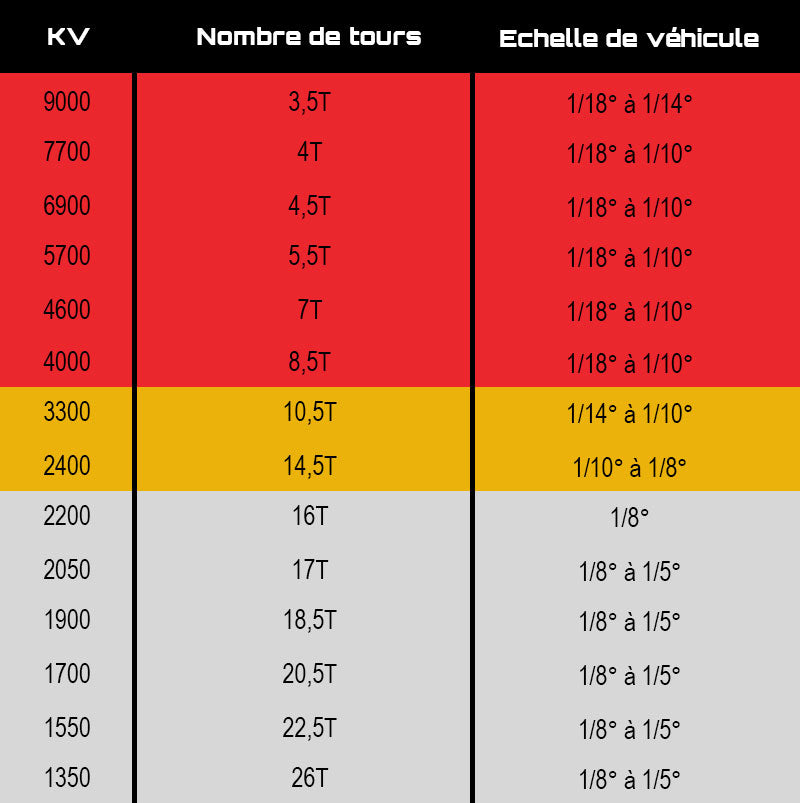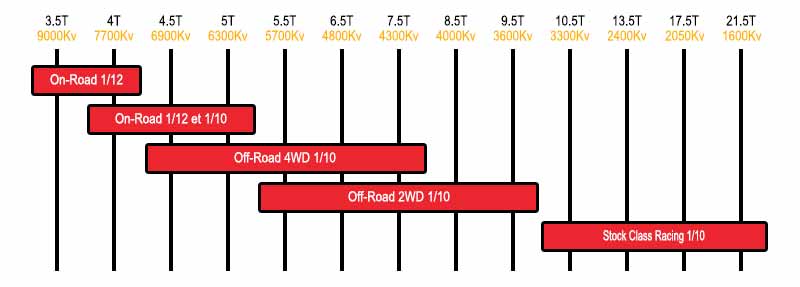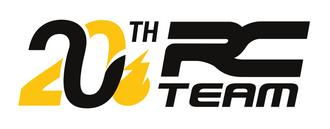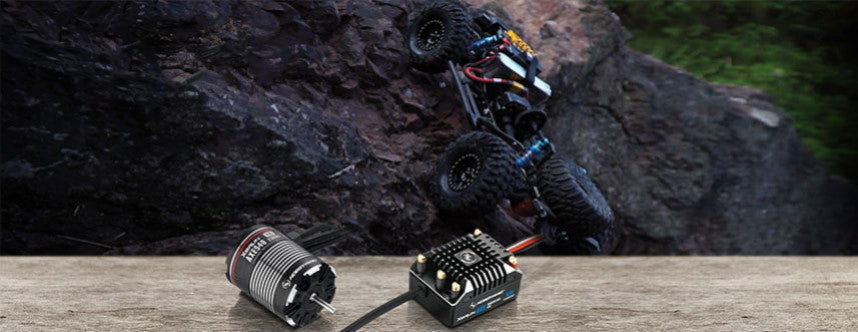Why choose a brushless motor?
There are two types of electric motors
usedin model making: brushed motors and brushless motors. While the less expensive brushed motors are still used for entry-level electric vehicles or crawlers, brushless motors have won the hearts of RC drivers who are fans of miniature car racing.
brushless motors are perfectly suited to miniature car racing thanks to their many advantages:
- no brush friction, meaning less wear and tear, longer engine life, lower power consumption, and better performance
- no need for break-in, so they are ready to use right out of the box
- less maintenance, just dust them off from time to time
brushless motors have naturally taken a prominent place in RC modeling, but choosing the right motor for your electric vehicle can seem complicated. In this article, we will explain the characteristics of these motors, how to choose one, and how to adapt it to your car using an ESC controller.
How to choose your brushless motor?
Motor size
The size of the brushless motor is the first criterion to consider. The size of the motor is always proportional to the size of the radio-controlled vehicle. It is therefore important to choose a motor that is suitable for the scale of the vehicle. For example, a motor for 1/8 scale vehicles is far too large to be installed on a 1/10 scale vehicle.
The relationship between torque and motor speed
The kv indicates the number of revolutions per minute per volt, i.e., the theoretical maximum speed of the motor. For example, a 3,800 kv motor will be capable of rotating at 3,800 rpm for 1 volt, or 28,120 rpm with a 7.4V Lipo battery. You may also find a T number attached to motors brushless, which is a reference for RC competition pilots.
It is important to note that increasing the kv speed comes at the expense of torque. You should therefore choose the best ratio for your needs. Here are some guidelines to help you choose the right speed for your motor.
On On-road:
- at 1/8 scale, you can choose a number of revolutions per minute per volt of around 2600 kv
- at 1/10 scale, for leisure 4500 kv, for competition 6500 kv
Outside of On-road:
- at 1/8 scale, you can choose a number of revolutions per minute between 1900 and 2200 kv
- At a scale of 1/10, for leisure use 3800 kv, for competition 5000 kv
What does T mean?
T is mainly used in RC competitions. Motors with Brushed brushed were classified by revolutions (T) according to their winding. Out of habit, this designation has been retained to indicate the power of motors brushless.
Here are two diagrams to help you convert kv to T:


The number of poles
Pairs of magnets are glued to the motor rotor. They generate magnetic poles, which can number 2, 4, 6, etc. These poles directly influence torque and speed. A motor with a low number of poles will run faster than a motor with a high number of poles, but will have lower torque. For example, with the same controller, a 2-pole motor will have twice the rotational speed but half the torque. Most controllers are designed for 4-pole motors.
Motor with sensor or sensorless?
Motors with sensors (also called sensored motors) are more expensive than theirsensorless counterparts. By indicating the position of the rotor to the controller, the sensor improves the flexibility, torque, and speed of the motor. However, sensored motors are rarely waterproof, which is their main disadvantage.
Please note that to take full advantage of a sensored motor, it must be paired with a SEC controller that is compatible with sensored motors.
Maximum motor power consumption (W)
The maximum power consumption of the motor, indicated in watts, is important to remember when choosing a controller car as the controller must be capable of delivering this power.
How to choose your ESC electronic ESC
What is an ESC electronic used for?
The ESC (electronic speed controller), also known as an ESC electronic, is an essential component for the motor to function. It connects the motor to the battery and delivers the necessary current according to the motor's demands. The motor consumes the most power during acceleration and braking; the rest of the time, consumption is relatively low.
What amperage for my ESC?
The first thing to check when choosing an ESC is that it meets the motor's requirements. The power in watts is determined by the formula P=UI. Since the voltage U is constant (7.4V for a LiPo battery), a motor with high maximum consumption must be coupled with a controller that delivers a high amperage.
To choose your ESC, you must therefore calculate the amperage required for the motor to function properly. For example, the calculation for a motor that consumes 463W and has a voltage of 7.4V is: I=463/7.4=62.6A. You should always choose an ESC with an amperage higher than the value obtained from the calculation. In the previous example, you could use an 80A controller. This is because if the amperage is too low, the ESC may overheat. Sometimes, the continuous amperage supported is not indicated with the ESC. In this case, you need to look at the minimum number of revolutions accepted (indicated in T).




